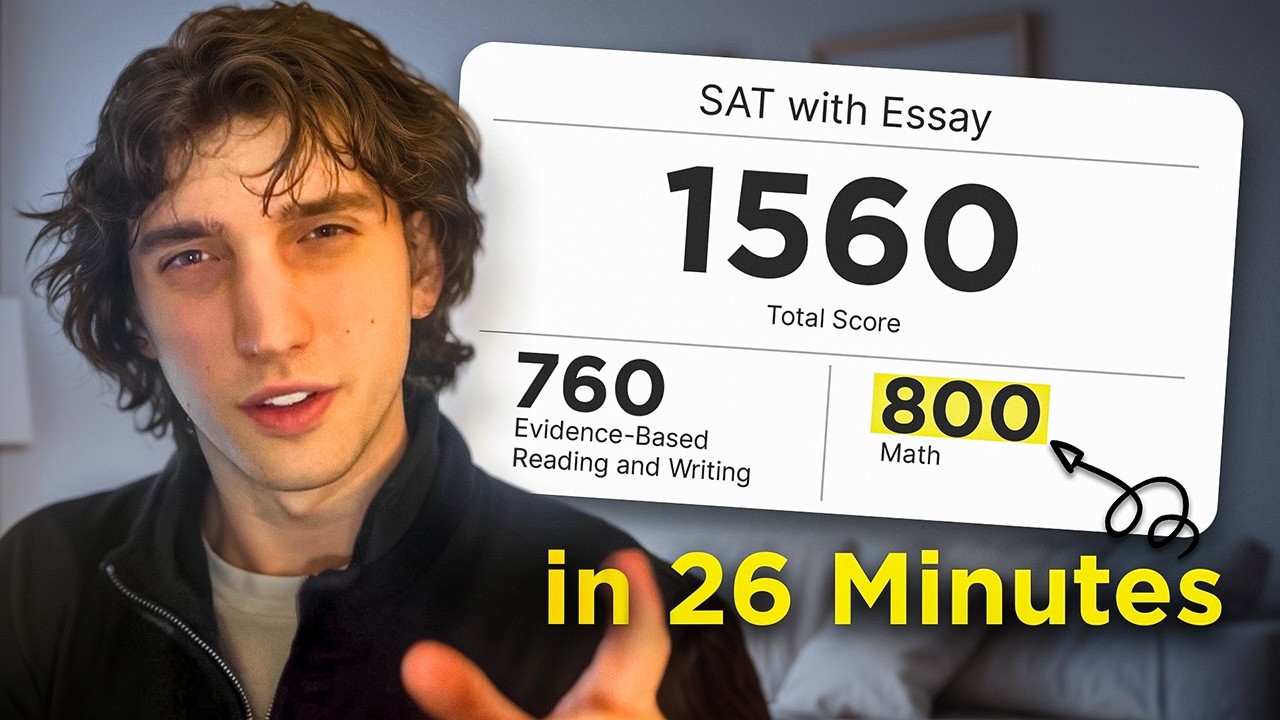
Essential Math Equations You Must Know for the SAT: A Complete Guide

- Essential Math Equations to Know for the SAT: A Comprehensive Guide
- Top Algebraic Equations You Must Master for SAT Success
- Geometry Formulas and Theorems Critical for SAT Math Sections
- Data Analysis and Probability Equations Every SAT Student Should Understand
- Tips for Memorizing Key Math Equations for the SAT
Essential Math Equations to Know for the SAT: A Comprehensive Guide
When preparing for the SAT, understanding key math equations is crucial for achieving a high score. The SAT Math section tests your ability to apply mathematical concepts, and being familiar with essential equations can significantly boost your confidence and performance. In this comprehensive guide, we will explore the fundamental equations that every student should know before taking the test.
1. Algebraic Equations
Algebra is a significant component of the SAT Math section. Here are some essential algebraic equations to master:
- Linear Equations: The standard form is y = mx + b, where m is the slope and b is the y-intercept.
- Quadratic Equations: The standard form is ax² + bx + c = 0. Familiarity with the quadratic formula, x = (-b ± √(b² - 4ac)) / 2a, is also essential.
- Factoring: Recognizing patterns such as a² - b² = (a - b)(a + b) can simplify many problems.
2. Geometry and Measurement
Geometry is another critical area tested on the SAT. Knowing the following formulas will help you tackle various geometry problems:
- Area of a Triangle: A = 1/2 * base * height
- Area of a Circle: A = πr², where r is the radius.
- Circumference of a Circle: C = 2πr
- Pythagorean Theorem: a² + b² = c², applicable in right triangles.
3. Data Analysis and Statistics
The SAT also includes questions related to data analysis. Understanding these key concepts can help you interpret data effectively:
- Mean: The average, calculated by (sum of all values) / (number of values).
- Median: The middle value in a sorted list of numbers.
- Mode: The value that appears most frequently in a data set.
By familiarizing yourself with these essential math equations and concepts, you can approach the SAT Math section with greater ease and accuracy. Mastering these equations not only helps you solve problems efficiently but also builds a solid foundation for more complex mathematical concepts.
Top Algebraic Equations You Must Master for SAT Success
To excel in the SAT math section, its crucial to have a solid grasp of key algebraic equations. Mastering these equations not only enhances your problem-solving skills but also boosts your confidence on test day. Below are some essential algebraic equations that every student should focus on to ensure success on the SAT.
1. Linear Equations
Linear equations are foundational in algebra, often represented in the form of y = mx + b, where m is the slope and b is the y-intercept. Understanding how to manipulate these equations allows students to solve for unknown variables and interpret graphs effectively. Practice transforming standard form equations into slope-intercept form and vice versa, as this skill is frequently tested on the SAT.
2. Quadratic Equations
Quadratic equations, expressed as ax² + bx + c = 0, are another critical area of focus. Students should be familiar with methods for solving these equations, including factoring, using the quadratic formula x = (-b ± √(b² - 4ac)) / (2a), and completing the square. Additionally, understanding the properties of parabolas—such as vertex and axis of symmetry—will help in answering related questions.
3. Systems of Equations
Mastering systems of equations is essential for tackling multi-variable problems. Students should be proficient in solving systems through various methods, including substitution and elimination. Recognizing how to interpret solutions—whether they yield a unique solution, no solution, or infinitely many solutions—will enhance your ability to navigate complex SAT questions effectively.
4. Exponential and Logarithmic Equations
Exponential equations, such as y = ab^x, and their logarithmic counterparts log_b(x) = y are increasingly relevant in SAT math. Understanding the properties of exponents and logarithms will enable you to solve equations and understand growth and decay problems, which are commonly featured in SAT questions. Familiarity with the change of base formula and the relationship between exponents and logarithms is also crucial for success.
Geometry Formulas and Theorems Critical for SAT Math Sections
Understanding geometry is essential for success in the SAT Math sections, as it encompasses various formulas and theorems that frequently appear in the exam. Mastering these concepts not only helps in solving problems accurately but also enhances problem-solving speed. Familiarity with the fundamental geometry formulas is crucial for tackling questions related to angles, shapes, areas, and volumes.
Key Geometry Formulas to remember include:
- Area of a Triangle: A = 1/2 * base * height
- Area of a Rectangle: A = length * width
- Area of a Circle: A = π * r² (where r is the radius)
- Volume of a Cylinder: V = π * r² * h (where r is the radius and h is the height)
- Pythagorean Theorem: a² + b² = c² (for right triangles)
Additionally, theorems play a pivotal role in understanding geometric relationships. For instance, the Triangle Sum Theorem states that the sum of the interior angles of a triangle is always 180 degrees. This theorem is fundamental for solving angle-related questions. Another important theorem is the Congruence Postulate, which asserts that two triangles are congruent if their corresponding sides and angles are equal. This knowledge is vital for identifying similar shapes and calculating unknown dimensions.
Moreover, recognizing properties of parallel lines cut by a transversal can aid in angle calculations. For example, alternate interior angles are equal, and corresponding angles are also equal. These relationships often appear in SAT problems, making it essential for students to be adept at applying these properties to solve complex questions efficiently. By mastering these geometry formulas and theorems, students can significantly improve their performance on the SAT Math sections.
Data Analysis and Probability Equations Every SAT Student Should Understand
Understanding data analysis and probability is crucial for SAT students aiming for a high score in the Math section. Mastering these concepts not only enhances problem-solving skills but also builds a strong foundation for interpreting real-world scenarios. In this section, we will explore key data analysis techniques and essential probability equations that every SAT student should be familiar with.
Key Data Analysis Concepts
Data analysis involves interpreting and making sense of data sets, and it often requires knowledge of various statistical measures. Here are some fundamental concepts that students should grasp:
- Mean: The average of a set of numbers, calculated by dividing the sum of the numbers by the count of numbers.
- Median: The middle value of a data set when arranged in ascending order. If there is an even number of observations, the median is the average of the two middle numbers.
- Mode: The value that appears most frequently in a data set. A data set may have one mode, more than one mode, or no mode at all.
- Range: The difference between the highest and lowest values in a data set, providing a measure of the spread of the data.
Essential Probability Equations
Probability is the study of uncertainty and the likelihood of events occurring. Familiarity with basic probability equations is essential for SAT success. Here are some critical equations to remember:
- Probability of an Event (P): The probability of an event occurring is calculated as P(A) = Number of favorable outcomes / Total number of outcomes.
- Complement Rule: The probability of an event not occurring is given by P(A) = 1 - P(A).
- Independent Events: For two independent events A and B, the probability of both occurring is P(A and B) = P(A) * P(B).
- Conditional Probability: The probability of event A given that event B has occurred is P(A|B) = P(A and B) / P(B).
By mastering these data analysis techniques and probability equations, SAT students can improve their analytical skills and enhance their performance on the test. These foundational concepts will not only aid in tackling specific SAT questions but also serve as valuable tools in academic and real-life situations.
Tips for Memorizing Key Math Equations for the SAT
Memorizing key math equations for the SAT can significantly enhance your performance on the test. With the right strategies, you can make the memorization process more efficient and effective. One of the best ways to start is by categorizing the equations into different topics. For example, group equations related to algebra, geometry, and data analysis. This approach not only organizes your study material but also helps you to recall equations based on the type of problem you encounter.
Utilize mnemonic devices to make equations easier to remember. Creating acronyms or phrases that incorporate the first letter of each component in an equation can help you recall complex formulas. For instance, for the quadratic formula (ax^2 + bx + c = 0), you might use the phrase "Alligators Bite Cats" to remind you of the variables involved. Additionally, consider making flashcards with the equation on one side and its application or a sample problem on the other. This method encourages active recall and reinforces your understanding of how and when to use each equation.
Practice is another crucial element in memorizing math equations. Regularly solving practice problems that require you to use these equations can help solidify your knowledge. Set aside dedicated study time each week to work through SAT math problems, ensuring that you apply the equations you’ve memorized. Incorporate timed quizzes to simulate the test environment, as this will also help you gauge which equations you need to focus on more.
Lastly, engage in collaborative study sessions with peers. Explaining equations to others can reinforce your understanding and memory. Teaching a concept is often one of the most effective ways to learn it yourself. Form study groups where you can quiz each other on key equations and share tips for remembering them. This social aspect of learning not only makes studying more enjoyable but also introduces you to different mnemonic techniques that may work better for you.
Did you find this article helpful? Essential Math Equations You Must Know for the SAT: A Complete Guide See more here General.
Leave a Reply





Related posts